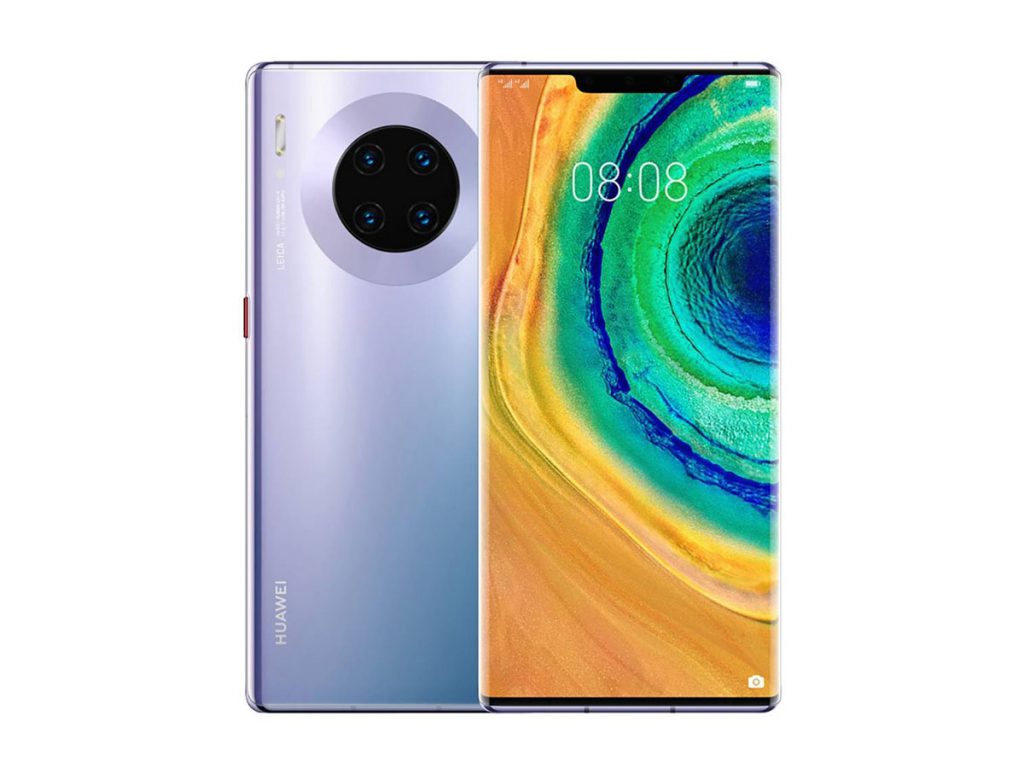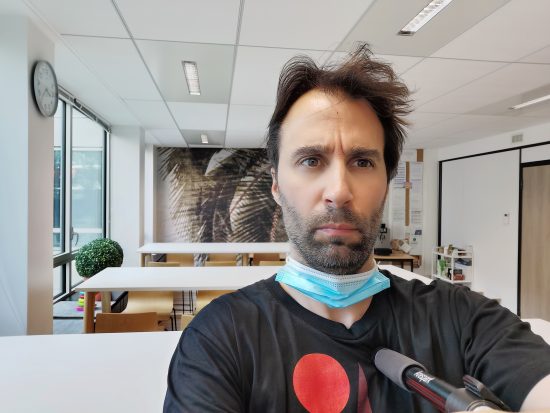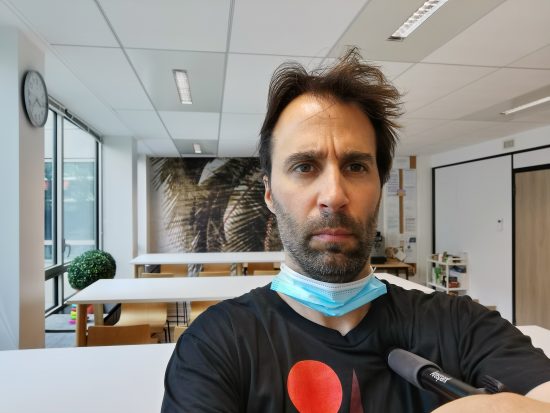The Huawei Mate 30 Pro 5G is the 5G-enabled version of the company’s late-2019 high-end phone. Like the standard model, it features a 6.53-inch OLED screen, a triple camera on the back, and 8GB of RAM. It ups the maximum internal storage to 512GB, and is based on the Kirin 990 5G chipset.
The front camera has a 32MP 1/2.8-inch sensor behind an f/2, 26mm-equivalent fixed-focus lens. It features time-of-flight (ToF) range finding for improved bokeh simulation and captures 1080p video at 30 frames per second.
Read on for the detailed test results.
Key front camera specifications:
- 32MP 1/2.8-inch sensor with 0.8µm pixels
- 26mm-equivalent, f/2.0-aperture fixed-focus lens
- ToF depth sensor
- 1080p/30fps video
- Kirin 990 5G chipset
About DXOMARK Selfie tests: For scoring and analysis in our smartphone front camera reviews, DXOMARK engineers capture and evaluate over 1500 test images and more than 2 hours of video both in controlled lab environments and in natural indoor and outdoor scenes, using the camera’s default settings. This article is designed to highlight the most important results of our testing. For more information about the DXOMARK Selfie test protocol, click here.
Test results


With an overall DXOMARK Selfie score of 84, the Huawei Mate 30 Pro 5G runs in the middle of the pack for a recent high-end handset. The best phones we’ve tested from Apple, Samsung, and Google outscore it by a substantial margin, as does the newer Huawei P40 Pro. Oddly, the non-5G version of the Mate 30 Pro also scored 9 points higher in our selfie tests, despite both devices using the same camera hardware.
The differences between the 5G and the non-5G are mainly due to different implementations of face beautification. The 5G applies a stronger beautification effect to faces, which results in a slightly brighter face exposure but can also lead to issues in high-contrast scenes. The correction for anamorphosis (face deformation close to the edges of the frame) is also less efficient on the 5G, and it produces higher levels of image noise in low light.
The front camera generally produces accurate and consistent exposures on faces, and noise is quite low in outdoor shots. However, dynamic range is somewhat limited, leading to clipping on the face. Although colors are generally accurate and white balance is stable, skin tones are sometimes inaccurately rendered and can look unnatural. Saturation is also a bit low, and color quantization is often visible in blue skies.
The Mate 30 Pro 5G front camera uses a fixed-focus lens, with focus optimized for relatively close distances, which means subjects farther away from the lens can be slightly out of focus. Acutance begins to drop from around 60cm out. Depth of field is quite narrow as well. Distant backgrounds are noticeably blurry when images are viewed on a large screen, and people farther from the camera in group selfies may not be quite in focus.
The Huawei Mate 30 Pro 5G’s front camera keeps noise low in good light, but strong noise creeps in when the lights go down. When noise is suppressed, detail and texture sometimes suffer. Facial detail also takes a hit, possibly from the phone’s beautification algorithms that can make faces look unnatural, which lowers the 5G’s artifacts score.
In near-darkness, the phone can still deliver a nicely detailed selfie with good color balance using the screen for illumination, but with a bit of artificial light in the mix, a slight yellow-green color shading is visible.
The front camera has a background-blurring bokeh mode, and the effect delivers a natural-looking blur gradient, making good use of the ToF depth data captured by the sensor. Artifacts around challenging areas like hair still occur, but are handled reasonably well.
The Huawei Mate 30 Pro 5G’s video mode is largely comparable to the standard model’s, with a front camera video score just two points less than the Mate 30 Pro’s — in other words, acceptable, though not impressive for its class. Exposure is accurate under all conditions, and unlike in stills mode, dynamic range is fairly wide. Colors are generally vivid and pleasant. In good light, the camera nicely balances noise suppression and detail retention. The electronic stabilization is effective in both our static and walking tests.
On the downside, the limitations of the fixed-focus lens that we noted in our stills testing are also apparent when shooting video, with faces starting to blur at longer distances from the phone. There’s visible tone compression in HDR videos, and some frame shift is noticeable, especially when panning.
Conclusion
The Huawei Mate 30 Pro 5G has a serviceable but not particularly impressive selfie camera. Exposure is accurate and noise is low in good light, but the camera often drops the ball with skin tones, crucially important for good selfies, and color in stills is generally a bit unsaturated. The bokeh mode is capable, but the camera’s shallow depth of field introduces blur in more distant subjects, including faces in group shots. The phone does better with front camera video, capturing a wide dynamic range and managing pleasant colors, but it’s still not quite up there with the very best. If you shoot only the occasional selfie, the Huawei Mate 30 Pro 5G will get the job done, but if you are really into front camera usage, other phones offer a more compelling performance, especially in the Mate 30 Pro 5G’s price range.
Photo
Pros
- Accurate exposure on faces
- Noise is low in outdoor shots
- Good detail and exposure in flash shots
- Good blur gradient and only limited artifacts in bokeh mode
Cons
- Skin tones can be inaccurate and unnatural
- Narrow depth of field means loss of detail at longer shooting distances
- Dynamic range limited, with frequent clipping on faces
- Color quantization often visible in skies
- Noise often visible indoors and in low light
Video
Pros
- Accurate exposure with fairly wide dynamic range
- Efficient stabilization in both static and walking videos
- Good balance between texture and noise in bright light
- Pleasant and vivid colors under most conditions
Cons
- Fixed-focus lens means faces blur when farther from camera
- Visible tone compression in HDR scenes
- Some frame shift noticeable, especially when panning










DXOMARK encourages its readers to share comments on the articles. To read or post comments, Disqus cookies are required. Change your Cookies Preferences and read more about our Comment Policy.